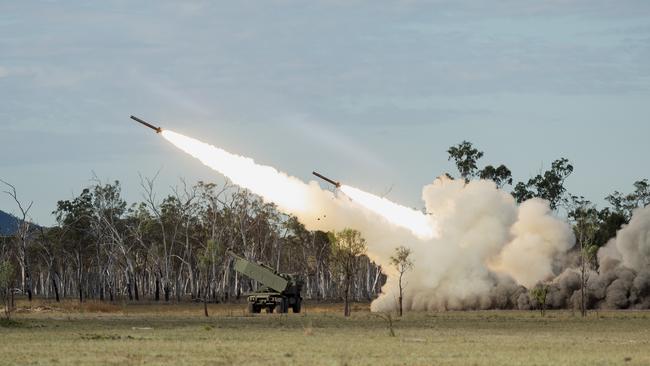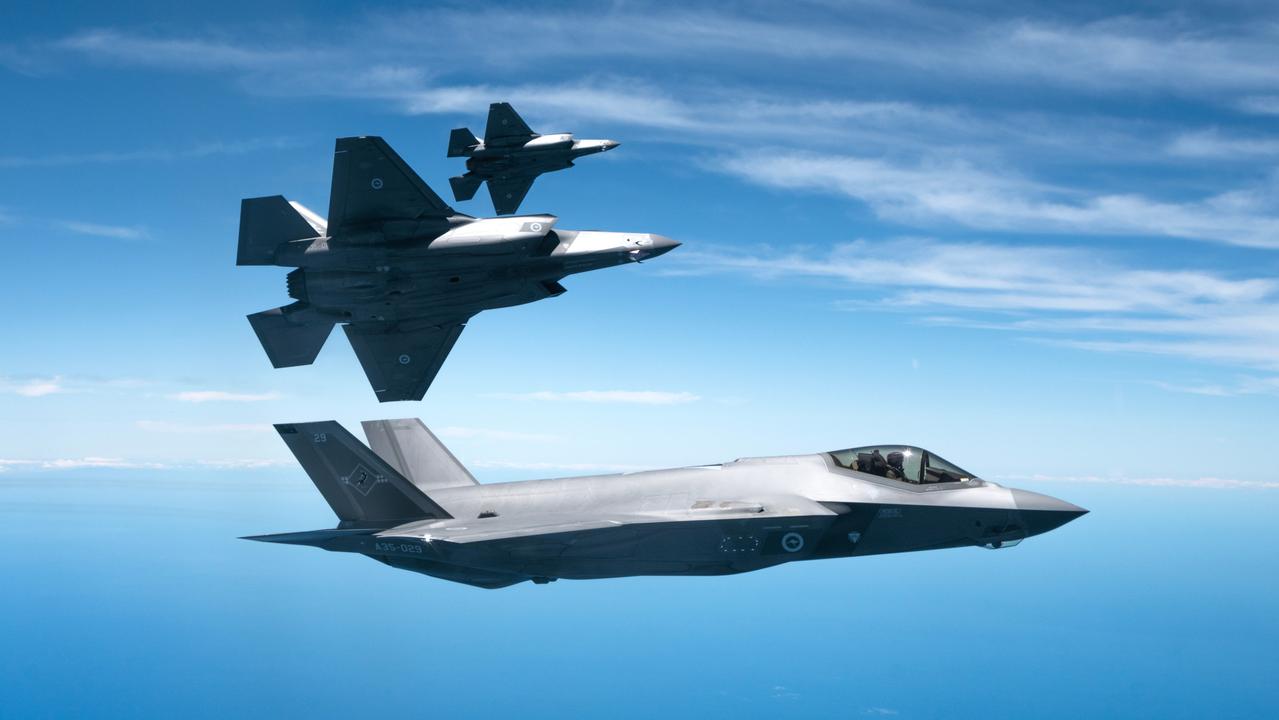Force plans for local suppliers of new long-range missiles
The ADF is plans on spending up to $27bn on 12 new families of long-range missiles between now and 2034, and investing another $21bn in the means of manufacturing some of them in-country.

Whether you’re talking about boxing or military tactics, the fighter with the longer reach has a definite advantage. The Australian Defence Force (ADF) is trying to give itself that advantage by spending up to $27bn on 12 new families of long-range missiles between now and 2034, and investing another $21bn in the means of manufacturing some of them in-country.
However, those long-range weapons aren’t in service with the ADF yet. And they don’t come cheap: the 1600km-range Tomahawk strike missiles will cost $1.3bn; the US State Department says 200 air-launched LRASM anti-ship missiles, range 370km, will cost Australia about $1.5bn.
Buying 42 M142 High Mobility Artillery Rocket System (HiMARS) launchers for the army’s new long-range fires force, the Adelaide-based 10th Brigade, and an initial batch of rockets will cost another $1.6bn. However, most of the HiMARS’ extended range Guided Multiple Launch Rocket System (GMLRS) rounds will eventually be built by Lockheed Martin at Defence’s Orchard Hills site in Western Sydney, initially under a $37m risk reduction contract signed last year.
But Australian industry will need to walk before it can run, cautions James Heading, director of programs at Lockheed Martin Australia’s Missiles and Fire Control division. Australian companies – and their supply chains – making American weapons will need to conform to the same standards as US manufacturers.

The ADF shopping list ranges from the 70km range GMLRS rocket, six of which are carried by a HiMARS launcher, to the 800km Extended Range version of the Joint Air-Surface Stand-Off Missile (JASSM-ER). It includes the 500km Increment 2 variant of the Precision Strike Missile (PrSM), which can also be fired from a HiMARS launcher, and the 1000km Increment 4 which is still under development.
Army’s still mulling over a requirement for 30 land-based anti-ship missile systems to be operated by the 10th Brigade. PrSM may eventually be able to hit moving targets; meanwhile, Kongsberg and Thales have combined to offer the former’s proven Naval Strike Missile (NSM) fired from a “twinpack” launcher mounted on the “ute” version of Thales’s Bushmaster vehicle and dubbed Strikemaster. Except for the Bushmaster, this is similar to the US Marines’ Ground-Based Anti-Ship Missile (GBASM) system.
The NSM has a 250km range and has been ordered by the RAN for its Anzac-class frigates and Hobart-class destroyers to replace Boeing’s venerable Harpoon missile. It will arm the RAN’s Hunter-class frigates and probably also its planned fleet of up to 11 general purpose frigates. The air-launched variant, the Joint Strike Missile, has been selected by the US Air Force and is a contender to arm the RAAF’s F-35A Lightning IIs.
Australia’s Guided Weapons and Explosive Ordnance (GWEO) Enterprise, and its manufacturing plans, will reportedly be considered by the federal cabinet next month. Most of Defence’s planned long-range weapons will be acquired from the US military under US Foreign Military sales (FMS) agreements. So, US weapons made in Australia must be interchangeable with their US counterparts: “We have to meet those US standards, which can be pretty rigorous, from the get-go,” says Lockheed Martin Australia’s James Heading.
The company has built 60,000 GMLRS rockets, so knows it well and can build an Australian supply chain centred on Orchard Hills to work to US standards, he says.
“It gives industry the chance to step up and learn … and then go on to develop a path to PrSM,” he says.
“If you can build a GMLRS rocket motor there’s no reason why you can’t use the same technology and the same skills to build other rocket motors. That’s what GWEO is about.”
Defence’s Orchard Hills depot is a secure site, says Heading. It may not be the final home for Lockheed Martin’s guided weapons production, he says, “but it is available right now and has capabilities on-site that we don’t have to reinvent”.
All of Defence’s Australian-made rocket motors, warheads and propellants are produced under Commonwealth control at Defence’s Thales Australia-operated Mulwala and Benalla factories. These will undergo a $220m upgrade to manufacture more complex propellants and warheads.
Queensland-based NIOA is manufacturing ammunition there, forging artillery rounds at a joint venture site in Queensland with Rheinmetall which can then be filled with explosive at Benalla and, with L3Harris Technologies, is exploring the manufacture of solid rocket motors for guided weapons.
“Both sites are government-owned commercially operated facilities of national importance,” Kongsberg Defence Australia’s chief executive John Fry says.
“It is expected that the Mulwala and Benalla facilities will be core in progressing Australia’s GWEO capability.”


